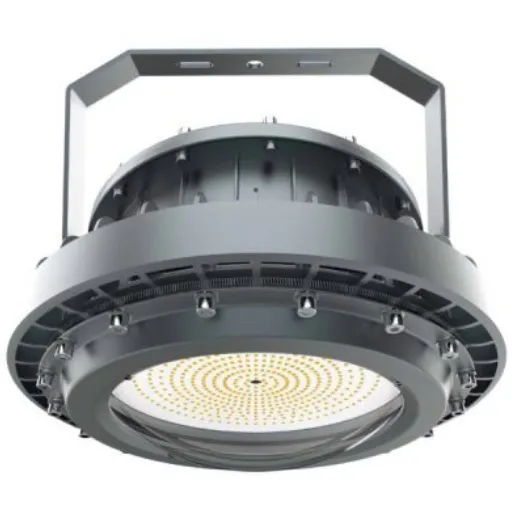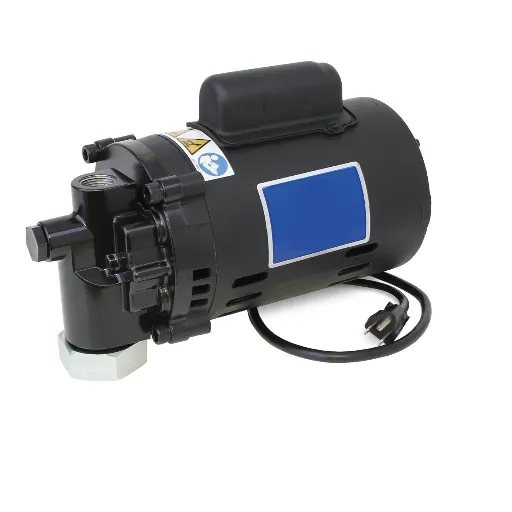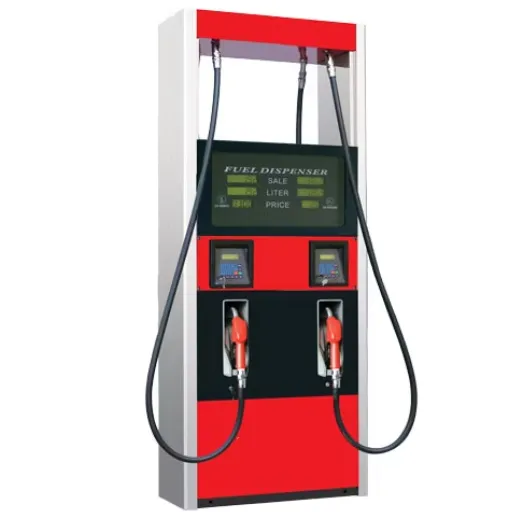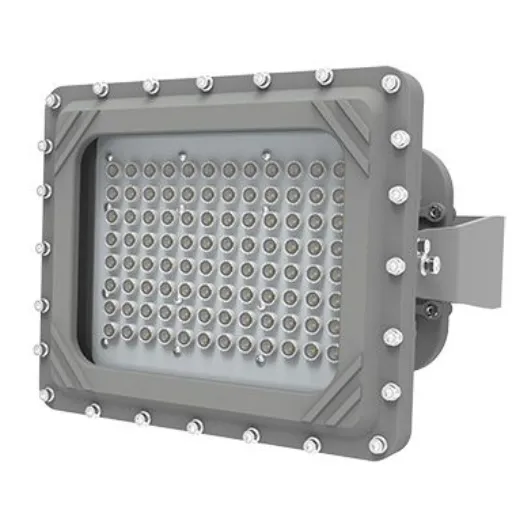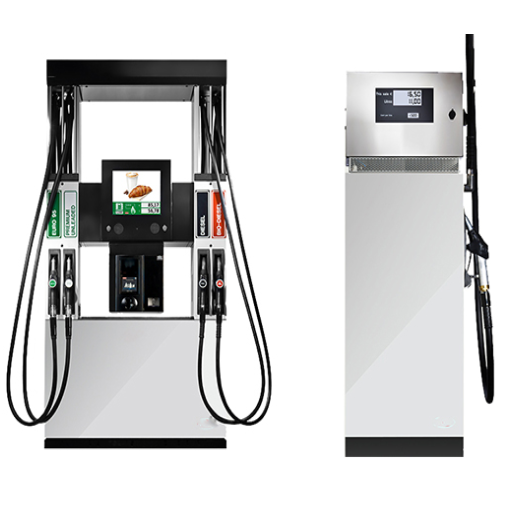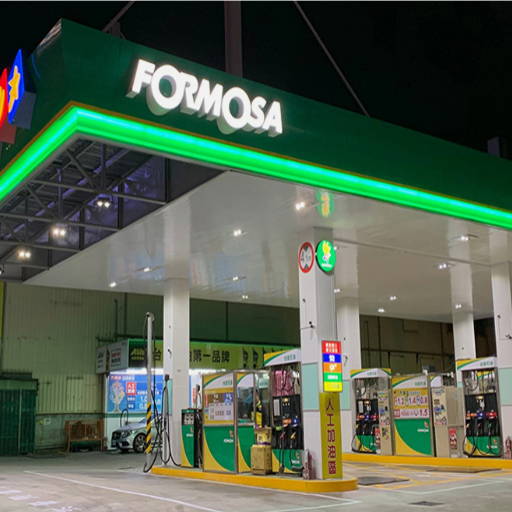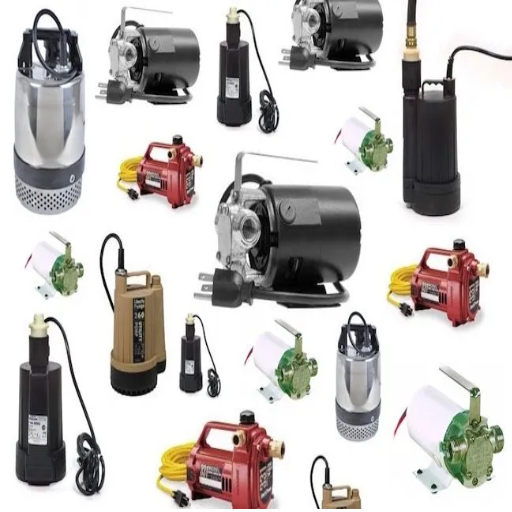To us, fuel dispensers are the pivotal elements of everyday life, serving as the link between the consumers and their source of power for their vehicles. How much are we really a lot for these machines, present everywhere? From dispensing petrol and diesel to advanced integrations with payment systems and sustainability considerations, fuel dispensers have truly far in evolution through the years. This blog will take you behind the scenes of a modern-day fuel dispenser and explain its working, technological advances, and the role it plays in providing an efficient and reliable salivation experience. Whether you are a business wanting to know the best solutions for your gas station or a fascinated soul eager to get insights into these systems, you will get plenty of answers in this article on the ultimate fuel solutions of today.
Understanding Fuel Dispensers
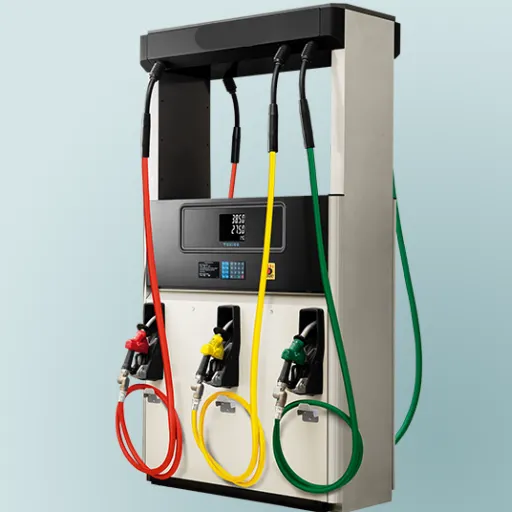
Fuel dispensers are systems designed to pump gasoline, diesel, or any other type of fuel into vehicles with relative efficiency and safety. A pump, meter, hose, and nozzle are the primary components that complete the cycle of accurate dispensing of fuel. Today, the range of fuel dispensers has become so vast that many varieties come equipped with digital displays, payment processing systems, sensor systems, and so forth, contributing to user convenience and operational reliability. The prime intention behind its existence is to facilitate animation-accurate refueling, along with safety standards.
What is a Fuel Dispenser?
Fuel dispensers pump and measure liquid fuel like gasoline, diesel, or kerosene into vehicles, machines, or storage containers. It draws fuel from an underground tank through a pump, measures it accurately through calibrated meters, and dispenses it through the hose and nozzle. Modern fuel dispensers feature digital displays and pay terminals with safety systems to improve convenience, ensure perfect accuracy in fuel delivery, and reduce hazards. Hence, they are mainly responsible for efficient fuel dispensing in gas stations all across the world.
History of Fuel Dispensers
The history of fuel dispensers dates back to the 19th century, with significant changes in its evolution. The first fuel dispensers had to be slow and manual and were in use somewhere in the 1880s for dispensing kerosene into lamps or stoves. By the early 1900s, with the increasing popularity of automobiles, there proved to be a need for specialized dispensers: Bowser made the first dedicated gasoline pump in Indiana.
Evolution Timeline
- 1880s: First manual fuel dispensers for kerosene
- Early 1900s: Specialized gasoline pumps for automobiles
- Mid-century: Mechanical pumps with dials
- 1970s: Electronic dispensers with digital displays
- Modern era: Touchscreens, environmental safety, and automated monitoring
Technological inventions organized the evolution of fuel dispensers over the course of the years. By mid-century, mechanical pumps with dials had replaced those early versions to simplify the fuel measurement process. The 1970s then saw the advent of electronic dispensers with a digital display, enhancing accuracy and convenience. Integration with computer systems then allowed for tracking data in real time, self-service, and credit card payments. It is safe to say that modern fuel dispensers are among the latest technological marvels to be built, featuring touchscreens, environmental safety, and automated monitoring systems, with over a hundred years of iterative improvements geared towards increasing demands.
Types of Fuel Dispensers
Fuel dispensers were grouped based on their working principles and the type of fuel dispensed. The major types are as follows:
Single-Hose Dispenser
These types of dispensers serve one type of fuel. These are frequently found at smaller fueling stations or establishments with limited fuel choices, such as regular gasoline.
Multi-Hose or Dual-Hose Dispenser
Multi-hose dispensers may dispense two or more types of fuel, having separate hoses for each grade or formulation (e.g., diesel, premium gasoline, or ethanol blends). It is convenient for the customer when flexibility in fuel choices is desired.
Multi-Product Dispenser (MPD)
This type of dispenser can dispense several different types of fuel from a single pump. Usually, these dispensers share hoses and use advanced blending systems to provide the end user with different fuel grades based on their selection. Very efficient and commonplace in contemporary gas stations.
High-Flow and Ultra-High-Flow Dispensers
Laden with its primary commercial or industrial applications, such as charging big trucks or maintaining heavy machinery, this dispenser dispenses the fuel at very high speeds, just to save time on refueling such applications on a large scale. In contrast, these dispensers are sturdy and have high flow rates.
Alternative Fuel Dispensers
These dispensers cater to vehicles running on non-conventional energy sources such as CNG, LNG, hydrogen, or electric power. As energy-efficient vehicles rose in prominence, those dispensers have become an essential element of the fueling infrastructure.
Key Insight: Every fuel dispenser type converts to specific customer needs and operations, showing the development of technology and diversification of fuel options.
Components of Fuel Dispensers
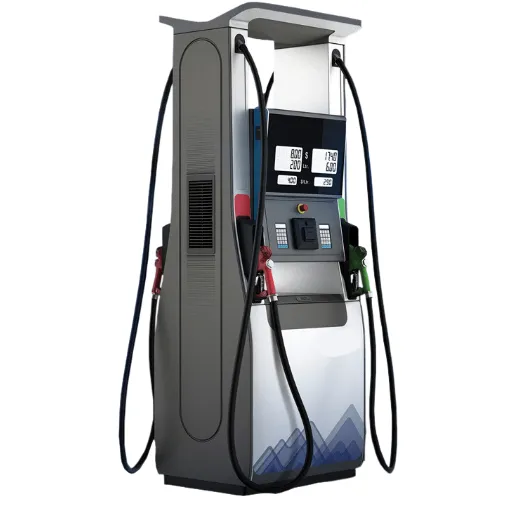
Essential Components Overview
- Nozzle: Provides safe and perfect-level discharge of fuel into the vehicle
- Hose: Flexible pipe that takes the fuel from the nozzle to the dispenser
- Metering System: Measures the precise quantity of fuel dispensed
- Pump: Pumps fuel from the storage tank to the nozzle
- Display Panel: Shows quantity of fuel delivered and its price
- Safety Systems: Emergency shut-off and overfill prevention systems
All these components work harmoniously together to dispense and supply fuel efficiently and safely while still meeting industry standards.
Main Components Explained
Force dispensing machines are valuable instruments. Each component has to be made to meet exact standards, incorporating the best of technology.
| Component | Function | Key Specifications | Performance Features |
|---|---|---|---|
| Pump | Delivers fuel at required flow rates | 10-40 GPM flow rates | Quick service for vehicles and machinery |
| Meter | Measures volume with precision | ±0.2% accuracy | Digital meters with regulatory approval |
| Hose & Nozzle | Durable handling and safety | 350 PSI pressure resistance | Automatic shut-off, reinforced materials |
| Fuel Filter | Removes contaminants | 5-micron particle filtering | Protects engines, extends equipment life |
| Display Panel | Real-time transaction data | LCD/LED technology | Touchscreens, digital payment options |
Safety Systems
Due to an increase in potential hazards, safety measures have taken precedence and occur through the consideration of leak sensors, fire suppression technology, and integration of emergency shutdowns. Being compliant with, if not above, stringent safety regulations, these measures save a great deal on operational hazards reduction.
Incorporating these performance-endowed features, the present fuel dispensers are designed for safety, accuracy, and user convenience, hence fulfilling the needs of today’s rushing environment.
Technology in Fuel Dispensers
Modern fuel dispensers have become highly anchored with all the latest technologies to improve efficiency, accuracy, and environmental protection.
IoT Integration Benefits
An example of this would be IoT technology, used for the purposes of real-time monitoring and diagnostics. Through IoT-enabled systems, operators can remotely monitor fuel levels, identify faults if there are any, schedule maintenance optimizations with minimal downtime, and improve operational performance.
Another prominent improvement is the incorporation of digital payment systems, which range from contactless payments to mobile apps. Digital payment systems present the advertised quick payment solutions, thereby catering to the current need for cashless transactions.
Environmental Technology Advances
Environmental concerns also drive innovation in fuel dispensing systems. For instance, vapor recovery systems act to contain and lessen the emissions generated during refueling. Some research suggests that up to 95% of fuel vapors could be recovered with such systems, enhancing air quality and assuring regulatory compliance. Implementation of renewable energy systems in a solar-powered fuel dispenser installation is another initiative toward energy efficiency and shortening carbon footprints.
Finally, accurate fuel metering has become the hallmark of advanced metering technology, whereby high-precision metering ensures fuel is dispensed accurately and reliably, avoiding conflicts and helping instill confidence in the end-user. These metering technologies, aided by data analytics and user-oriented design, are of the utmost importance in steering the fuel dispenser technologies into the evolving market.
Safety Features of Fuel Dispensers
Critical Safety Systems
Fuel dispensers have been provided with a myriad of safety features aiming to reduce risk factors and make safety a matter of concern for users and the environment.
Emergency Stop Systems
One such important safeguard is an emergency stop system set to prevent the overflow of fuel during the filling process. This emergency shutdown ceases the flow of the fuel once the amount entering a tank reaches the maximum allowed. Besides preventing spills and thereby safeguarding the environment from any hazards, this ensures proper operations.
Vapor Recovery Systems
Another important safety device is the vapor recovery system. The system recaptures fuel vapors that are carcinogenic and could be disgorged into the atmosphere during refuelling operations. Before the installation of vapor recovery, high-use facilities were severely contributing to air pollution with volatile organic compound emissions, probably by as much as 35%.
Additional Safety Features
- Antistatic Designs: Reduce the probability of static spark ignition during fueling
- Shut-off Valves: Prevent fuel flow during pressure surges, accidents, or fires
- Emergency Shut-offs: Integrated monitoring for leak detection and anomaly alerts
- Standards Compliance: Following NFPA and IEC international standards
The other modern enhancements combined emphasize safety to minimize the risks posed to its users and to lessen ecological impact.
Fuel Dispenser Technologies
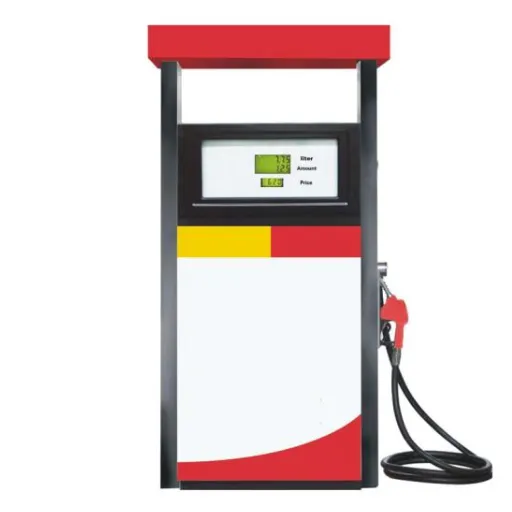
Fuel dispenser technologies are continually being improved for the sake of efficiency, accuracy, and user convenience. Modern fuel dispensers, in essence, use digital displays for clear readings; automatic-stop functions are installed so that overfilling cannot occur; on-site payment options exist for quick transactions. Also, there are further advanced technologies on top, such as sensors, to guarantee precise measurement of the fuel to prevent errors; thus, the customer will get the value for which they are willing to pay. An increasing number of dispensers are outfitted with connectivity features to monitor data in real-time and perform remote diagnostics that aid in maintenance, which ultimately leads to operational efficiency. This set of innovations is geared toward providing safe, reliable, and easy-to-use refueling experiences.
Digital vs. Analog Dispensers
Digital Dispensers Advantages
- High electronic systems for exact fuel measurement
- LED/LCD displays for clear information viewing
- Network integration for real-time monitoring
- Contactless and mobile payment integration
- Data accuracy within 0.25% error
- Reduced fraud capabilities
- Central management system interface
Analog Dispensers Benefits
- Mechanical systems with proven durability
- Straightforward operation
- Suitable for areas with limited infrastructure
- Lower maintenance costs
- Cheaper initial installation
- Less susceptible to electronic failures
- Reliable in rural or remote settings
Operational-wise, digital dispensers take the edge in being able to cut down on fraud, maintain accuracy, and be perfectly interfaced with a central management system. Yet, the maintenance and initial installation costs run higher for these dispensers compared to their analog counterparts. Analog dispensers are cheaper and simpler to maintain, but may not warrant the detailed record keeping and data analysis that are prerequisites for high-demand stations or the modern business. Essentially, the choice between digital and analog dispenser systems depends on the fueling station’s requirements, which reside mainly in its location, budget, and the level of advancement it wishes to maintain.
Smart Fueling Solutions
Revolutionary Technology Integration
Smart fueling solutions are meant to usher in a new era for the energy sector with the use of modern technology, emphasizing efficiency, environment, and customer experience. Such systems use IoT connectivity, cloud analytics, payment automation, and myriad other innovations to present real-time data to the concerned authorities and ensure smooth operations at the fueling stations.
Performance Benefits
- Reduced Downtime: IoT-enabled fuel dispensers reduced downtime by up to 30% thanks to predictive maintenance
- Faster Transactions: Automatic payment systems reporting increases in transaction speed of 25 to 40%
- Inventory Optimization: Remote monitoring prevents unnecessary stock orders and reduces wastage
- Sustainability Focus: Integration with renewable energy sources and EV charging stations
Environmental Benefits
Smart fueling solutions also endorse sustainability. Biorefineries and EV charging stations are just two instances of the renewable energy sources that are gaining strength. With the extension of alternative fueling options, these businesses have the ability to serve environmentally-conscious customers and diminish carbon emissions. The advancements demonstrate the significant role that smart technology must play in energy distribution, turning fuel stations into works of efficiency while being sustainable and customer-oriented.
Future Trends in Fuel Dispenser Technology
Emerging Technology Trends
Alongside technology, fuel dispenser businesses are rapidly transforming, with sustainability being promoted worldwide.
IoT Integration and Predictive Maintenance
An emerging trend is the incorporation of IoT (Internet of Things) in fuel dispensers, thereby providing real-time monitoring and predictive maintenance capabilities. This inevitably reduces downtime and enhances safety by preemptively acting on potential problems before they grow. It is estimated that IoT-enabled dispensers might help to reduce maintenance costs by up to 30% while greatly upgrading operational efficiency.
Alternative Fuels Revolution
Another trend shaping the future is the emergence of alternative fuels such as hydrogen and electricity. Various countries, including Japan, Germany, and South Korea, are pushing the hydrogen infrastructure in a big way.
In parallel to this, the integration of EV charging within traditional gasoline stations is becoming more commonplace with the soaring demand for electric vehicles. Over 50% of all new vehicle sales are estimated to be electric by 2040, creating a dire need for the charging infrastructure.
Payment System Evolution
The payment process is seeing revolutions brought on by developments in its setup. Contactless payments, mobile applications, and even blockchain payments are going to be the normal setup with modern-day fuel dispensers. It is a bonus for consumer convenience and consumer security as well. Research has suggested that the adoption of mobile payments in the fueling industry could escalate at an annual rate of 15% for the next ten years.
Sustainability Innovations
Such innovations with sustainability in mind are being developed as another potential disruptive force, like those dispensers that claim to incorporate carbon capture. In those systems, emissions are most likely mitigated on-site while fueling, thereby aiding climate goals. The coming together of all these trends stands as a testament in favor of the efficiency, sustainability, and shift toward a new energy paradigm that this industry is witnessing.
Environmental Impact of Fuel Dispensers

This is how fuel dispensers impact the environment, both directly and indirectly. Directly, the systems contribute to greenhouse gas emissions in the dispensing of fossil fuels, the burning of which releases carbon dioxide into the atmosphere. Indirectly, the production and upkeep of dispensers consume energy and raw materials, increasing their environmental footprint. Technology aims at alleviating such effects through carbon capture systems and enhanced fuel efficiencies. Promotion of alternative fuels such as biofuels or hydrogen at these dispensers could further reduce environmental impacts in line with global aspirations for sustainability.
Reducing Carbon Footprint
The reduction of carbon footprints on fuel dispensers and associated infrastructure involves a multi-pronged approach. Alternative studies have demonstrated that the switch to renewable sources of energy for dispensing stations always accounts for far fewer emissions.
Additional intelligence-based applications, including monitoring systems based on the Internet of Things (IoT), can thus be developed to optimize energy consumption and efficiency, thereby reducing waste.
Alternative Fuel Solutions
Greenhouse gas emissions from transportation constitute a primary driver of climate change. An increase in dispensing facilities for low-emission fuels such as compressed natural gas (CNG) or hydrogen will reduce such emissions. Lifecycle analyses have shown that hydrogen fuel cells emit almost no greenhouse gases during operation and are hence cleaner than conventional fuels. Moreover, better maintenance and emission standards can go a long way in cutting down on leaks and losses in the dispensing of fuel, all contributing to efficiency and sustainability.
Investments in research and development are key, with innovations such as carbon capture technology and compatibility with biofuels offering some promising ways to reduce environmental impact. If these technologies are scaled up across the industry, their utilization would greatly aid in achieving the global goals toward carbon neutrality, just as alternative fuels have seen a steady increase in usage over the years in various countries.
Innovations for Eco-Friendly Fueling Solutions
Eco-friendly fuels are continuously developed, with the urgency to counter climate change and meet global emissions targets driving the momentum.
Hydrogen Fuel Technology
A major innovation in the spotlight is hydrogen fuel technology. If we consider hydrogen as a fuel, it emits only water vapor, which is very clean compared to any traditional fossil fuel. Thus, green hydrogen, produced by electrolysis of water by renewable energy, produces no carbon footprint during its production process. Out of the many scenarios considered, the International Energy Agency (IEA) sees hydrogen potentially accounting for 10% of global energy consumption by 2050, thereby foregrounding its role in the transformation towards sustainable energy.
Sustainable Aviation Fuel (SAF)
By now, many research projects have demonstrated the potential of SAFs to cut lifecycle greenhouse gas (GHG) emissions by 80 percent compared to jet fuel derived from petroleum. SAF is generated through renewable sources such as agricultural waste or algae; there can even be a process that utilizes captured CO2. Airlines on a worldwide scale are now adopting SAFs; there have even been projections about the global market for SAF reaching $15 billion by 2030. In parallel, the third generation of unconventional electric and hybrid power systems is awaiting commercialization with applications in aviation.
Electric Vehicle Technologies
The landscape of electric vehicle technologies continues to rapidly develop. In battery technology, innovations like solid-state batteries bring possibilities for greater energy density, quicker charging, and better lifecycle as compared to the current lithium-ion options. In conjunction with the fast-paced build-out of EV charging infrastructure, including ultra-fast chargers that can charge vehicles within minutes, electric mobility becomes more and more viable and accessible.
Advanced Biofuels
Alongside, there are biofuels making up another segment in green fuel technologies. Advanced biofuels are made from non-food biomass and waste materials and are being further adopted into transportation and industrial processes. These are emissions-reducing fuels that also promote grounds for circular economies, wherein waste streams are used. For example, biodiesel blends are deployed in heavy-duty vehicles and ships, helping to compensate for carbon emissions in industries generally considered to be highly polluting.
Industry Collaboration: The push for greener fuels can only come about with private funding, governmental incentive policies, and international collaboration. Through continued R&D, these technologies promise to greatly diminish our dependency on fossil fuels and provide a cleaner and greener alternative.
Regulations and Standards
This tendency toward green fuels is, in fact, kept afloat by strict regulations worldwide aiming to reduce greenhouse gases and promote clean-energy alternatives.
European Union Standards
For instance, the European Union has put in place the Renewable Energy Directive (RED II), one of the specific goals set toward renewable energy utilization in transport, requiring member states to realize at least a 14% share of renewable energy in the transport sector by 2030.
United States Regulations
Similarly, the United States Environmental Protection Agency (EPA) enforces the Renewable Fuel Standard (RFS), which prescribes renewable fuel blending requirements for all refiners and importers with the intent to reduce about 138 million metric tons of CO2 emissions every year.
International Maritime Standards
Beyond the application of those already-enacted and enforced by international organizations such as the IMO, IMO 2020 was introduced to regulate sulfur content in marine fuel at 0.5%, drastically reducing air pollution through shipping. New standards for hydrogen as a fuel, such as ISO 14687, assure the quality and safety of hydrogen for automotive and fuel cell use systems.
Financial Incentives
And these regulations go hand-in-hand with financial incentives and tax credits. For example, the Clean Fuel Standard in Canada entices companies to use low-carbon fuels via a market-based mechanism. In this way, collaboration between countries, industries, and policymakers assures that the frameworks remain good technological innovations while providing some measure of consistency in alternative fuels.
Choosing the Right Fuel Dispenser
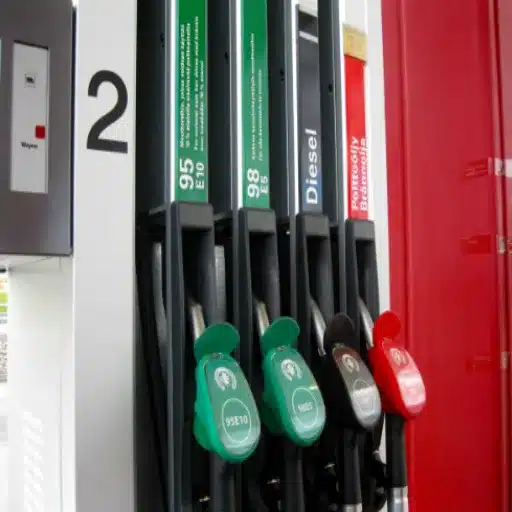
Selecting a fuel dispenser is usually based on the type of fuel and usage volume, along with site requirements. For retail fuel stations, only use dispensers suited to high-traffic environments with simple user interfaces. Dispenser design for alternative fuels such as hydrogen must adhere to safety and performance standards specific to that fuel. Consider whether the dispenser will suitably interface with existing systems and their maintenance needs. Always select models guaranteed by reputable certifications and trusted manufacturers to assure efficiency into safety.
Factors to Consider
There are several factors of great importance to evaluate when deciding on which type of fueling dispensers to use.
Technological Compatibility
From the point of view of technological compatibility, be sure the dock integrates with any outlet for payments, fleet management software, and data collection tools. For example, having modern EMV-compliant dispensers is more important for secure payment processing and fraud protection.
Energy Efficiency
The growing demand for energy and sustainability has led manufacturers to introduce energy-efficient models that consume less electricity while maintaining optimum performance. Low-energy pumps and LED-lit interfaces, for instance, gradually work their way into operational cost reductions.
Safety Compliance
Dispensers for alternate fuels such as hydrogen or CNG should be designed to conform to safety guidelines such as those promulgated by the NFPA and support real-time monitoring for effective handling of the fuels.
Durability and Maintenance
Durability and maintenance are other important criteria. Models with proven durability made of long-lasting materials like stainless steel or powder-coated components are preferable for high-traffic locations exposed to harsh environmental conditions. Also, dispensers equipped with advanced self-diagnostic features can help prevent downtime by alerting the operator to potential maintenance problems.
Customer Experience Features
One should not include any customer-side preferences, such as contactless payment options, the user interface in different languages, or access to networked loyalty programs. A report on retail technology trends observes that there has been a rising demand from consumers for convenience and speed during transactions, more so in busy areas. Providing such features thus helps the customer and, more importantly, brings in operational efficiencies for the station owners.
Evaluating Fueling Solutions for Businesses
In carrying out analyses on fueling companies for possible collaboration, I am chiefly concerned with keeping them cheap and scalable while ensuring technological modernity. Solutions need to be deeply utilitarian for enhancing operations, all while servicing customer demands for convenience and speed. Loyalty programs could also be a consideration; options for touchless payments; accessibility features such as multi-language support that could ensure a higher degree of accessibility and satisfaction for users. So, basically, solutions should address business imperatives while still having an easy interface for customers.
Cost vs. Efficiency
When analyzing cost versus efficiency, it is essential to analyze the fine equilibrium with comprises initial investment on one side and long-term projection of benefits on the other. Cost-effectiveness does not simply mean picking the cheapest alternative; rather, it means the choice of those options whereby the utmost utilization of resources is achieved by minimizing wastage. Efficient solutions will often save operational costs, labor costs, and grow productivity over the long course of time. Consider, for example, some technologies such as automation and AI that have higher initial costs but far greater enhancements in efficiency by way of reducing repetitive tasks and improving accuracy. In the end, the important thing is to make expenditures in alignment with business goals, with investments that create measurable outcomes and sustainable value.
Conclusion
Modern fuel dispensers represent a sophisticated blend of technology, safety, and environmental consciousness that continues to evolve with changing energy needs. From their humble beginnings in the 1880s as manual kerosene dispensers to today’s smart, IoT-enabled systems, these machines have become indispensable components of our energy infrastructure.
The future of fuel dispensing technology lies in the integration of alternative fuels, enhanced digital payment systems, and sustainable solutions that reduce environmental impact. As we move toward a more environmentally conscious future, fuel dispensers will play a crucial role in facilitating the transition to cleaner energy sources while maintaining the efficiency and safety standards that modern consumers demand.
Whether you’re a business owner selecting the right fueling solution or simply interested in understanding these ubiquitous machines, the key is to consider factors such as technological compatibility, safety compliance, environmental impact, and long-term cost-effectiveness. The investment in modern, efficient fuel dispensing technology not only benefits immediate operations but also contributes to the broader goals of sustainability and energy security.
Reference Sources
2. Consumer Protection Related to Dispensing Pump Manipulation in Gas Stations (2021)
3. Automatic Vehicle Fueling System Using PLC Controlled Robotic Arm (2024)
Frequently Asked Questions (FAQs)
What is a fuel dispenser, and how does it work in fuel management?
The fuel dispenser offers a service of dispensing fuel to internal combustion engines. Fueling stations consider it along with fuel management systems. These dispensers put the fuel into the vehicle’s fuel tank by drawing it from the storage tank through a pump. It generally has a meter through which the quantity of fuel dispensed is tracked. Payment through the dispenser may also be possible.
How can I maximize fuel management through a fuel dispenser?
To better fuel management with a fuel dispenser, it is desirable to implement systems designed to efficiently monitor fuel usage and inventory levels. Advanced dispensers connected to fuel management software would, therefore, allow the operator to measure usage patterns, produce better refueling schedules, and reduce wastage. This would lead to the fuel being available and well used, with savings costs being the last factor.
What safety features do modern fuel dispensers have on forecourts?
Modern fuel dispensers are equipped with a variety of safety features forecourt. These include automatic overfill protection valves, emergency stop switches, and leak detection systems. Meanwhile, some of them are equipped with filters to ensure that clean, contaminant-free fuel is dispensed, thereby ensuring refueling safety.
Can I buy a fuel dispenser for my own shop?
Yes, a fuel dispenser may be bought for your own shop, but all local regulations and safety standards need to be observed. It is very important to see that your shop will be able to take care of its fuel storage and dispensing requirements with the proper permits and an established supply infrastructure. Suppliers offer a wide array of models suited to different business needs and budgets.
How exactly is Dover Company related to the fuel dispenser market?
Today, Dover Company is one of the biggest manufacturers of fuel dispensers and the related equipment. Design-wise, they have a reputation for innovation and technology to help in making fuel dispensing operations efficient and safe. These systems find applications in gas stations and commercial fueling operations and contribute significantly to the advancement of the fuel management industry.
How do fuel dispensers facilitate fast service at gas stations?
Fuel dispensers facilitate fast service at gas stations by enabling customers to quickly fill up their vehicles without longer waiting times. Easy-to-use interface, multiple fuel nozzles, and in-built withdrawal systems all work together to create a seamless experience. Transfer rates of fuel have been upgraded with new technology, thereby reducing the time spent at pumps.
What all matters need to be considered in installing a fuel dispenser during construction?
Issues should be considered when installing a fuel dispenser in the construction phases. These include assuring the application of local regulations, the correct choice of location concerning accessibility and safety, and provisions for adequate fuel storage capacity. Also, electrical, plumbing, and safety considerations must be part of the installation of the fuel dispenser, ensuring its correct operation.
How do I keep my fuel dispenser in good shape for long-life performance?
It is critical to work on the upkeep of your fuel dispenser to ensure long-life performance. This requires frequent inspections and servicing, such as looking out for and repairing leaks, cleaning the filters, and calibrating the meters. Also, the dispenser must always be clear of any dust accumulation; it will help if you attend to any mechanical issues at the earliest to avoid prolonged downtime and risk-laden operations.

